In rural Japan, ramshackle wooden structures are commonplace, but few of them are as interesting as the long-abandoned H-Clinic.
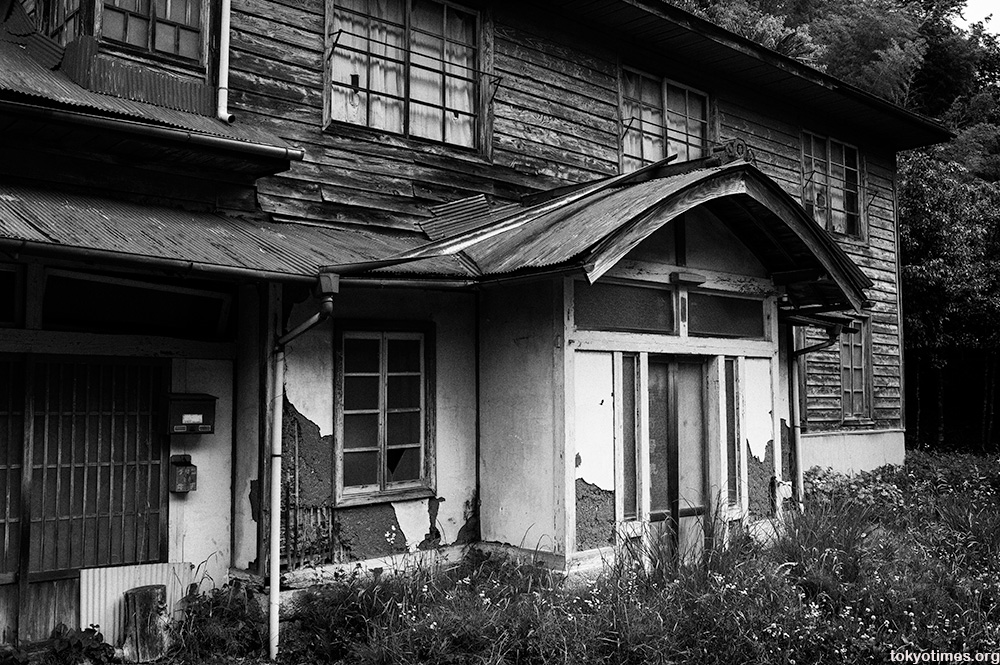
Details are relatively scarce about when it was built, but the general consensus seems to be somewhere around the end of the Taisho period, or the beginning of Showa — so probably some time in the 1920s. And walking through the building’s decaying wooden rooms really is like stepping back in time. Perhaps not quite as far back as the 20s or 30s, but most certainly the post-war era.
There are the medical concerns.
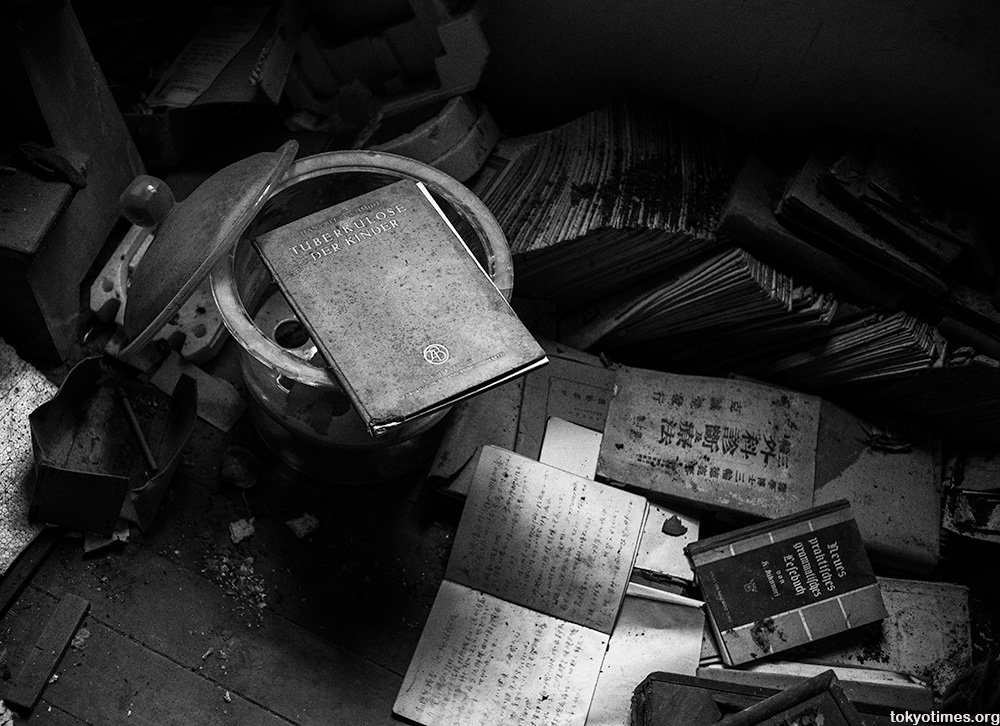
Along with the medicine and apparatus used to treat them. Some of which are fascinatingly archaic.
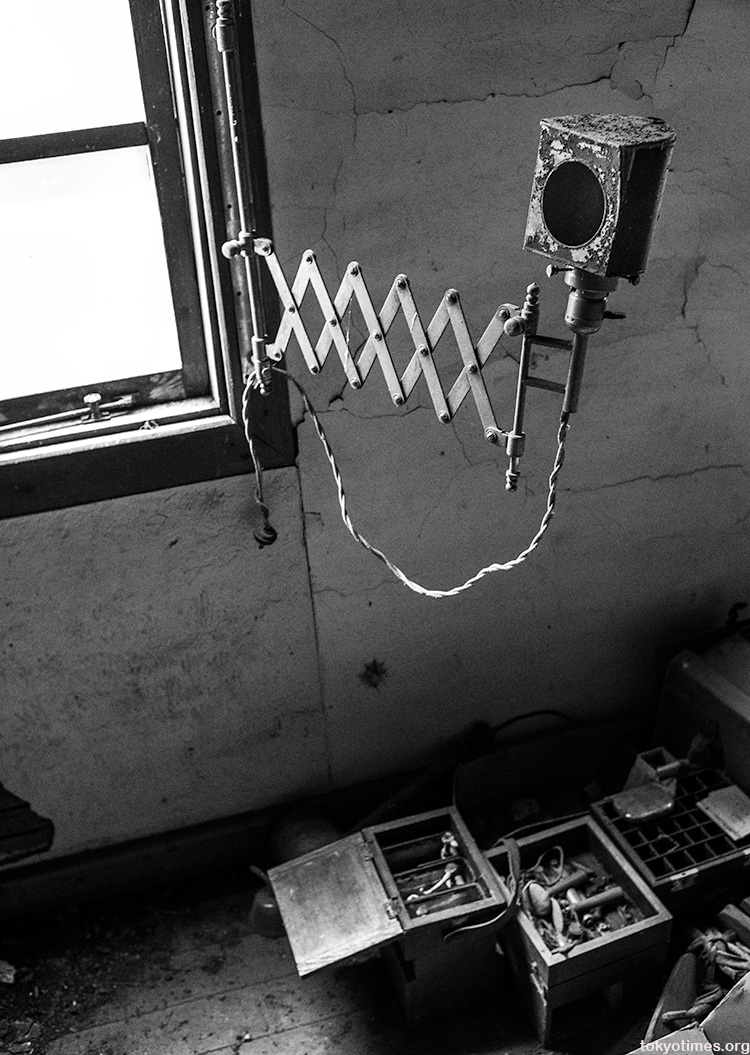
Whereas others seem more akin to a laboratory than a clinic.
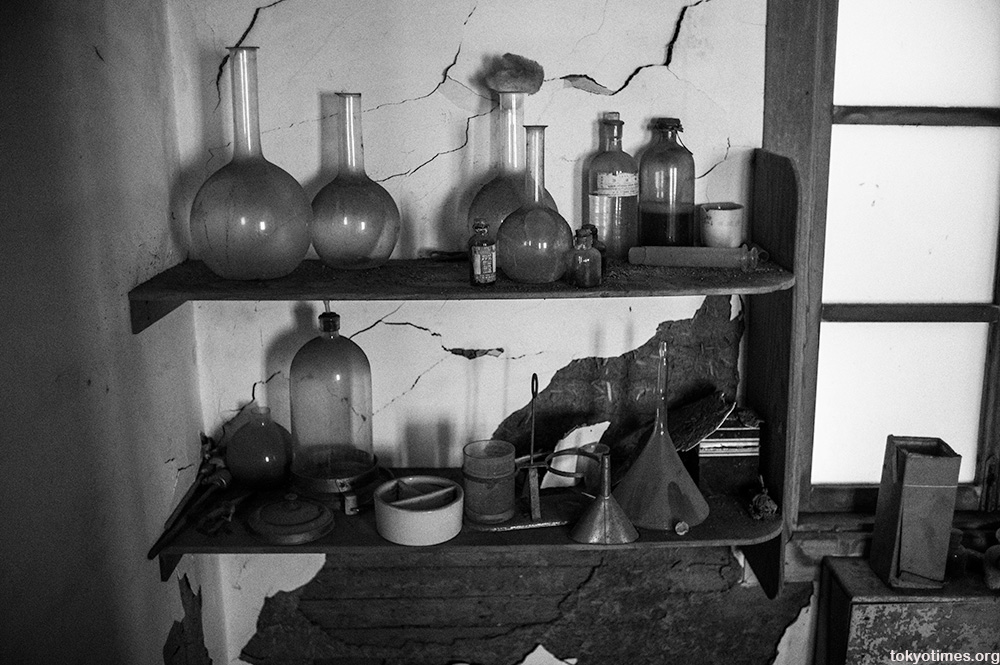
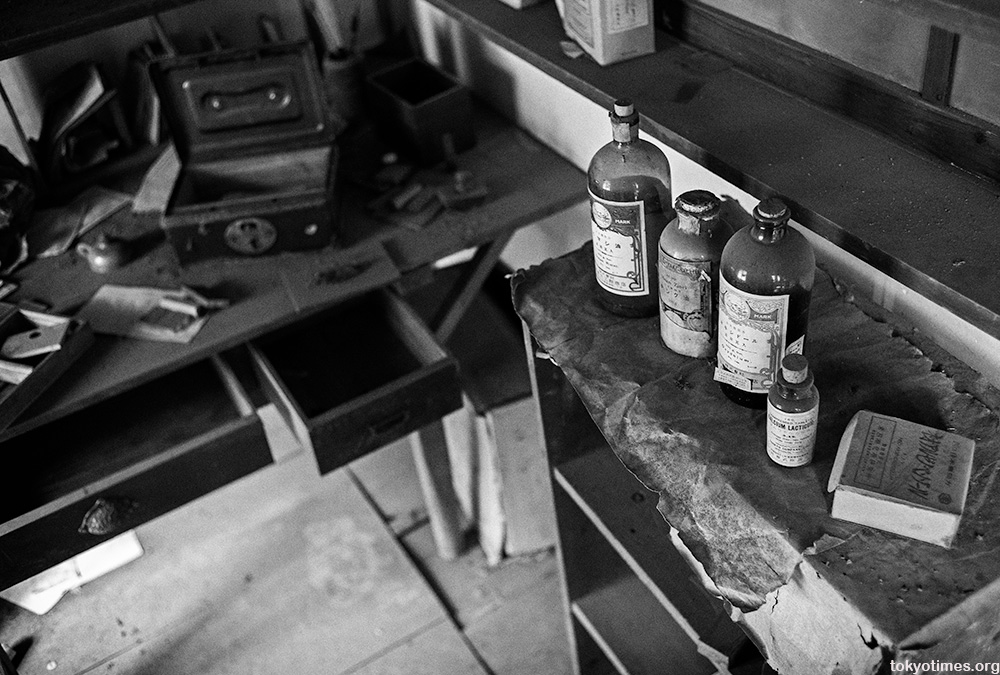
Although this photograph leaves no doubt about the building’s use, and the occupation of its owner.
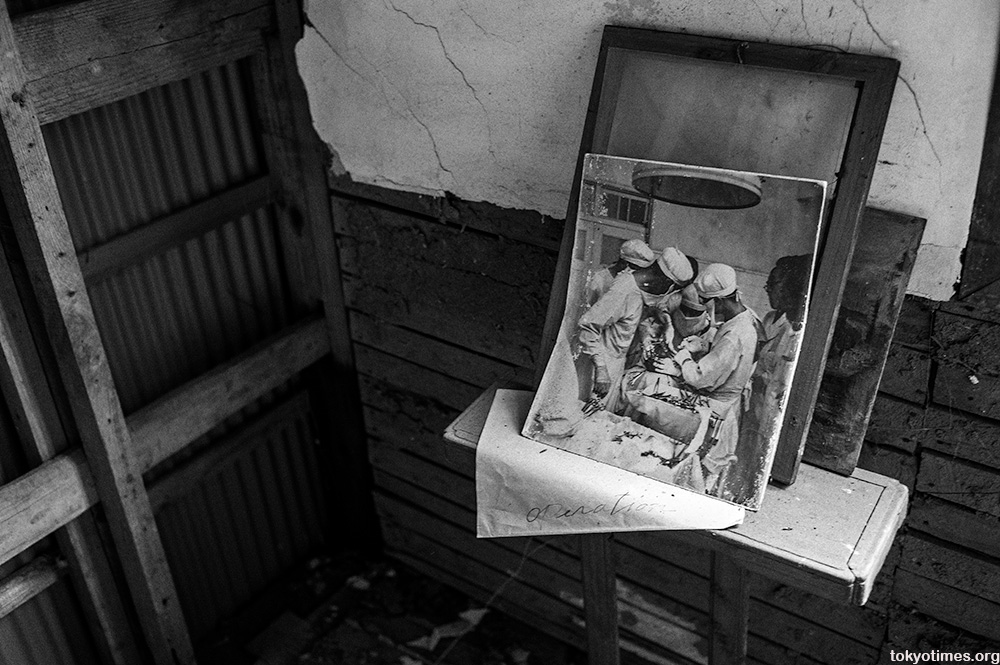
Like the structure itself, little is known about the doctor, but as well as running his own medical facility, his old business card states he also held a position at a Red Cross hospital.
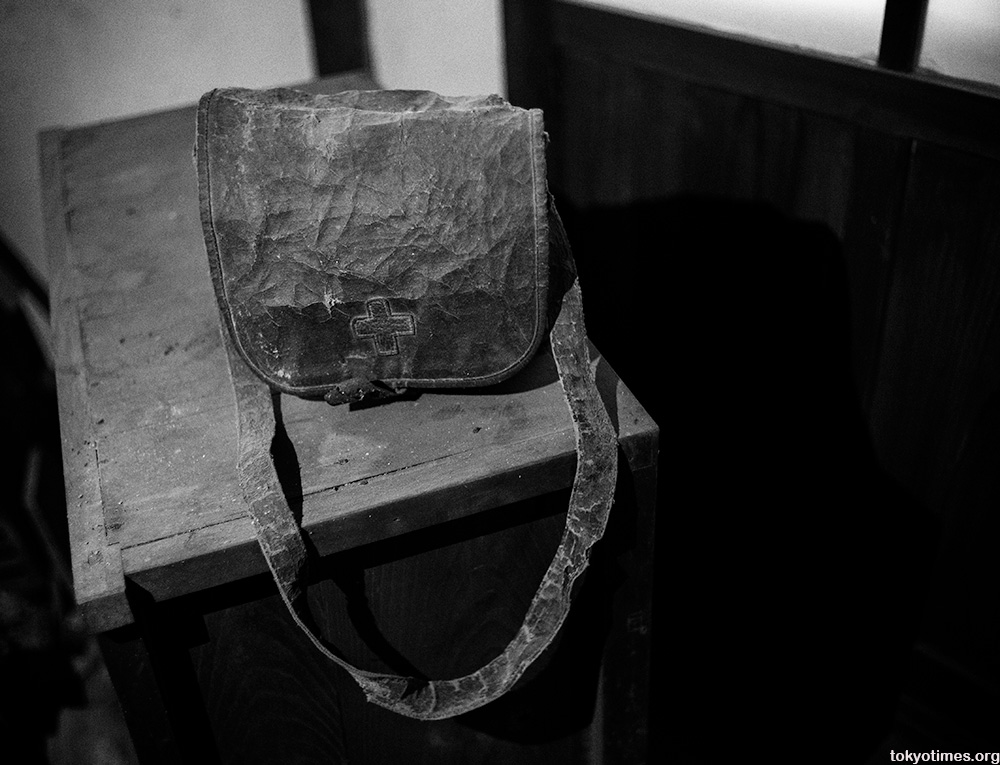
And as far as personal details go, we do know that he lived in the clinic with his wife and daughter. The deceptively large structure doubling as both a home and medical centre.
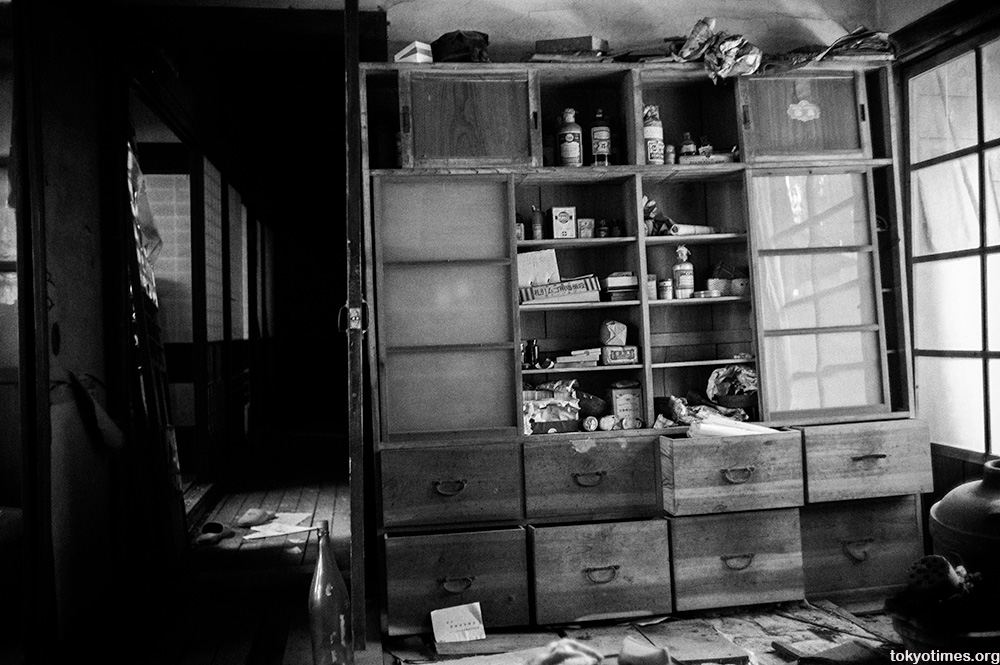
Upstairs there are now only simple, sparsely decorated bedrooms, although the way up there isn’t anywhere near as secure as it once was.
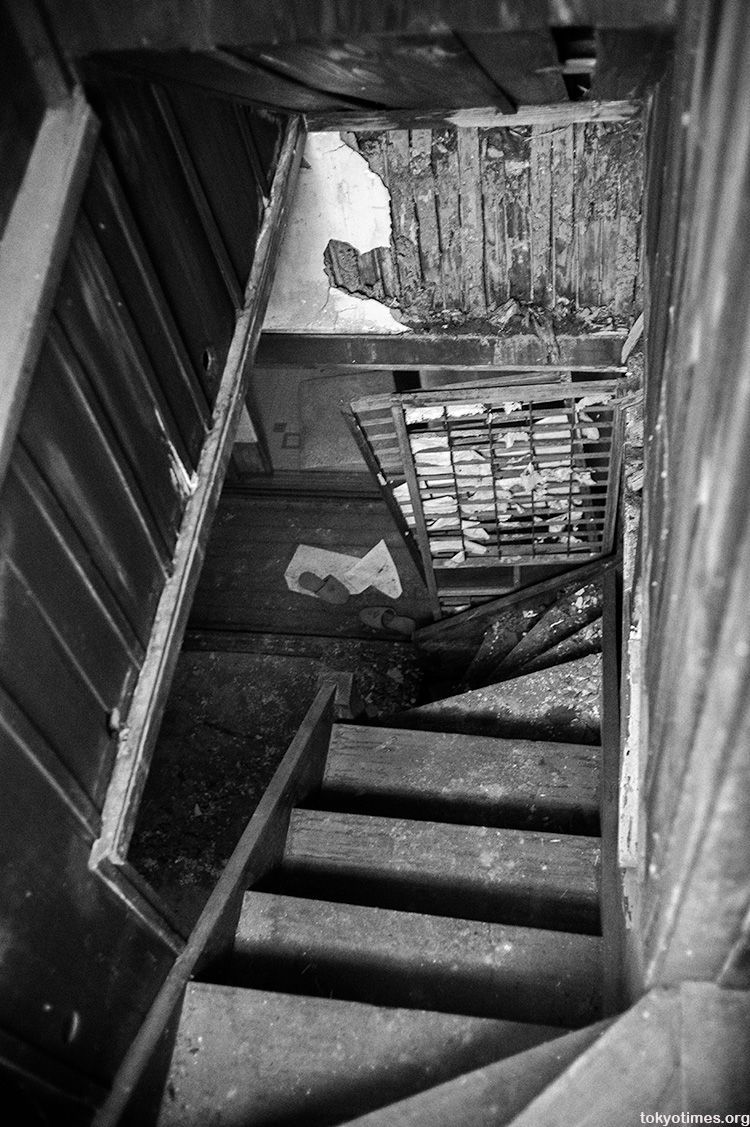
There was perhaps also a study of sorts, as there is still no shortage of books.
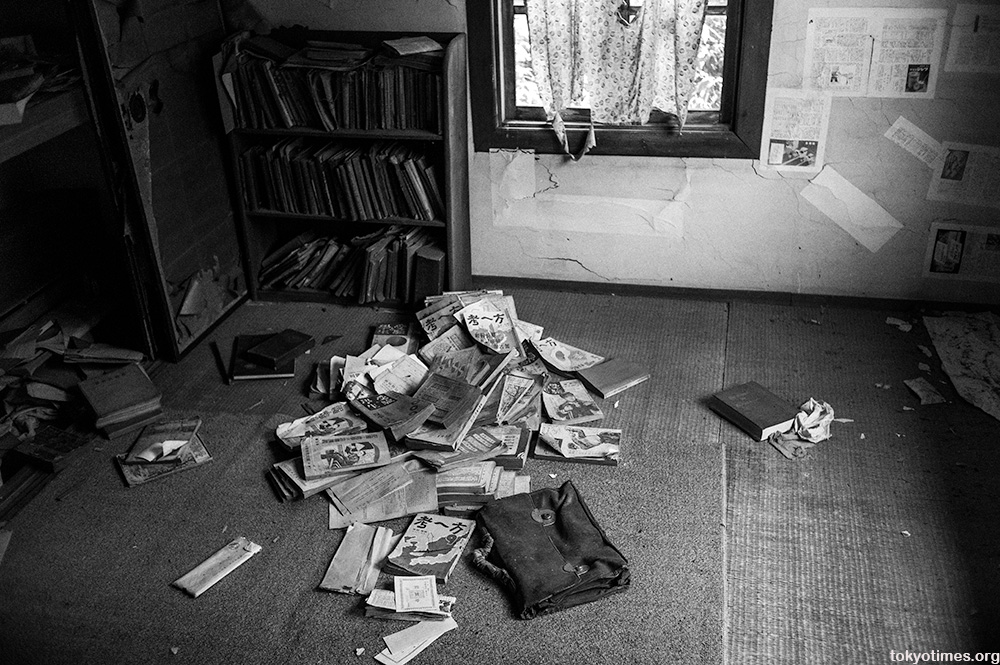
The downstairs living quarters, however, still give a real sense of how the doctor and his family lived. Decor-wise, the kitchen, like the clinic, is very dated.
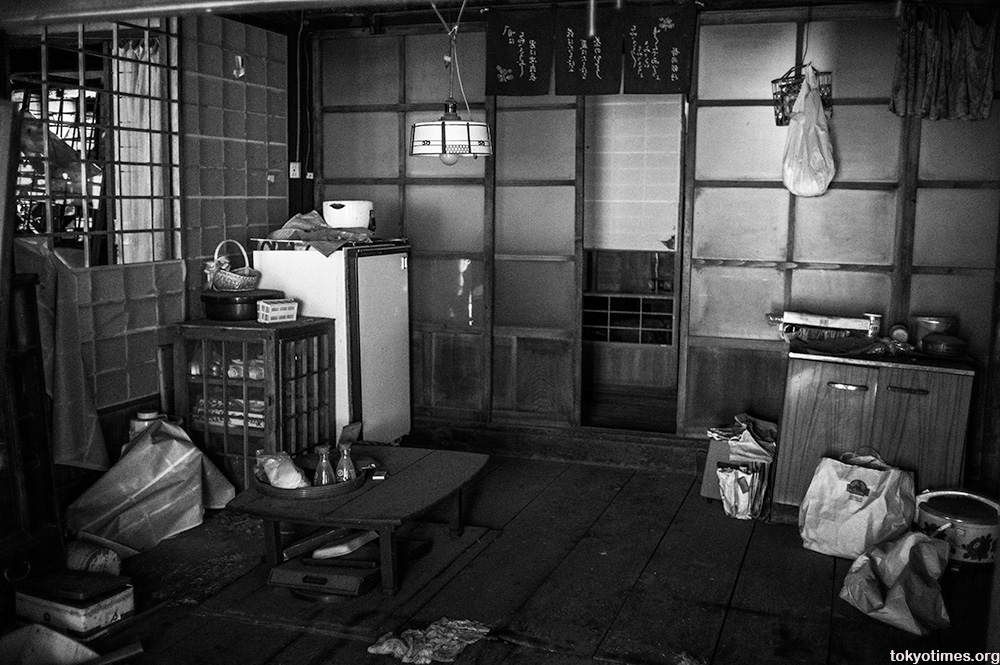
The living room on the other hand is a real mishmash of eras and design. And in this area in particular, the sense of quietness and the slow passage of time that is so much a part of exploring abandoned buildings — whether they be once opulent homes, mountain schools or whole villages — is most apparent.
No noise from the TV.
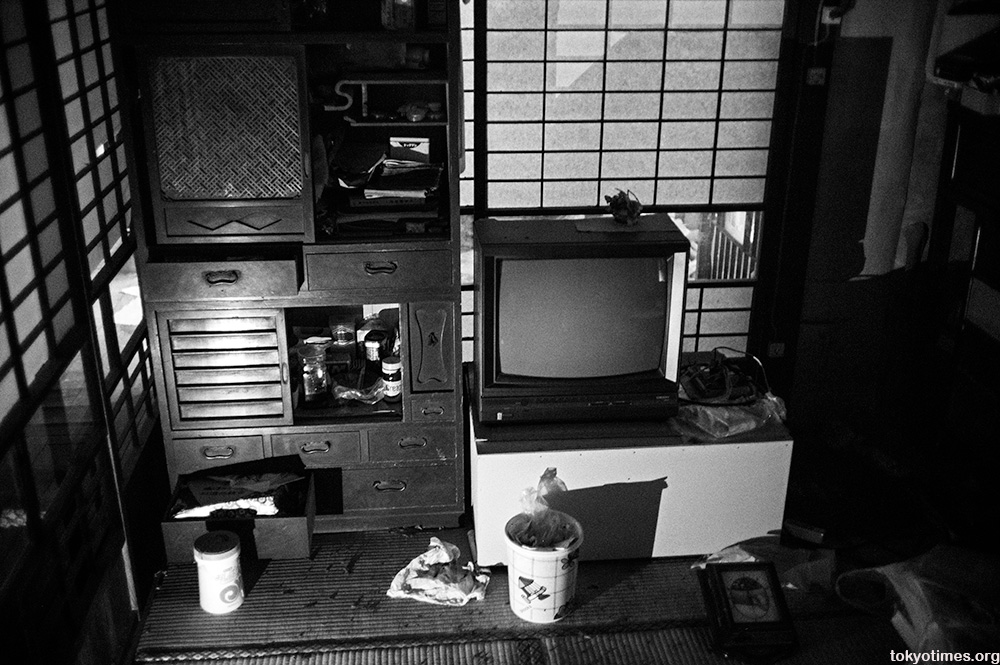
No chatting either.
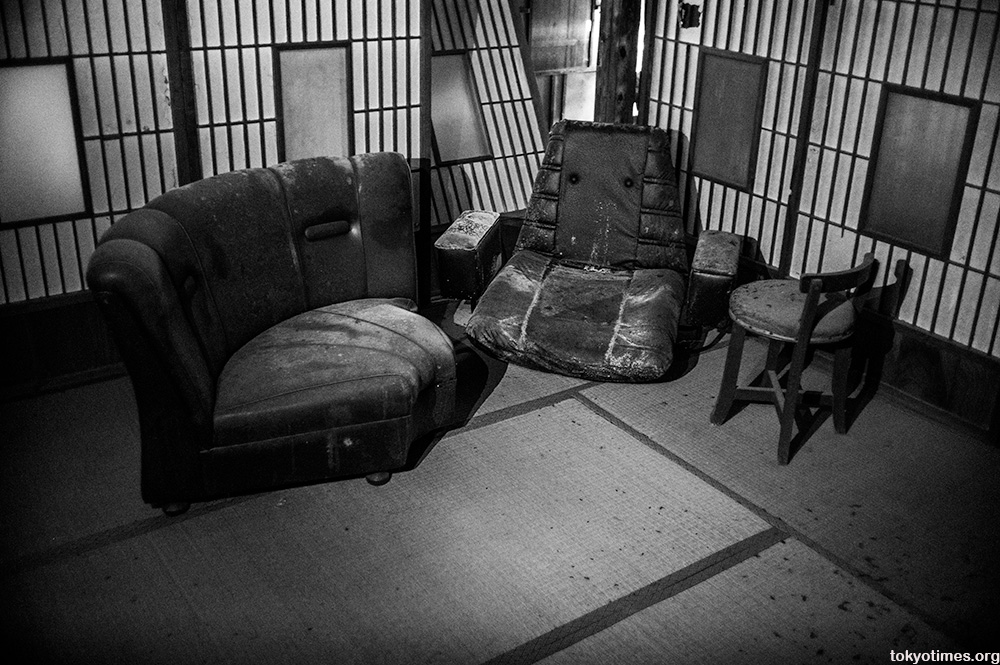
Plus like many Japanese homes, there is a butsudan, or Buddhist altar, where respects were once dutifully paid to ancestors and lost family members.
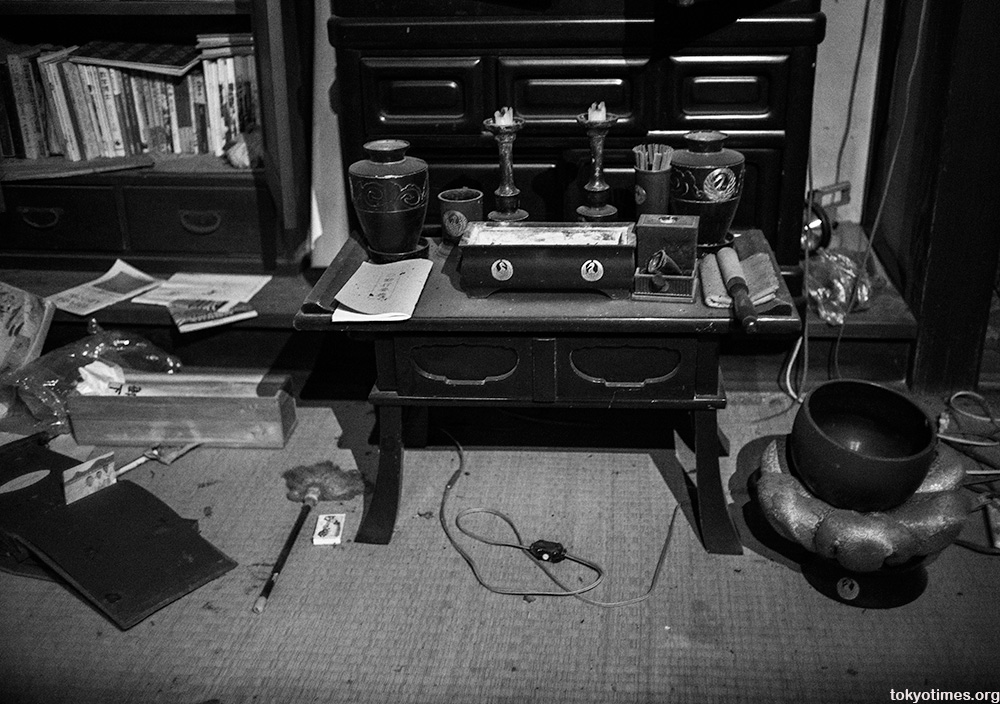
This also has further significance, as the wife was a committed devotee of Soka Gakkai, a lay Buddhist group with huge political and financial clout. The certificate on the wall offering gratitude for efforts in spreading the word, and the portraits are of the current president, and founder of Soka Gakkai International, Daisaku Ikeda.
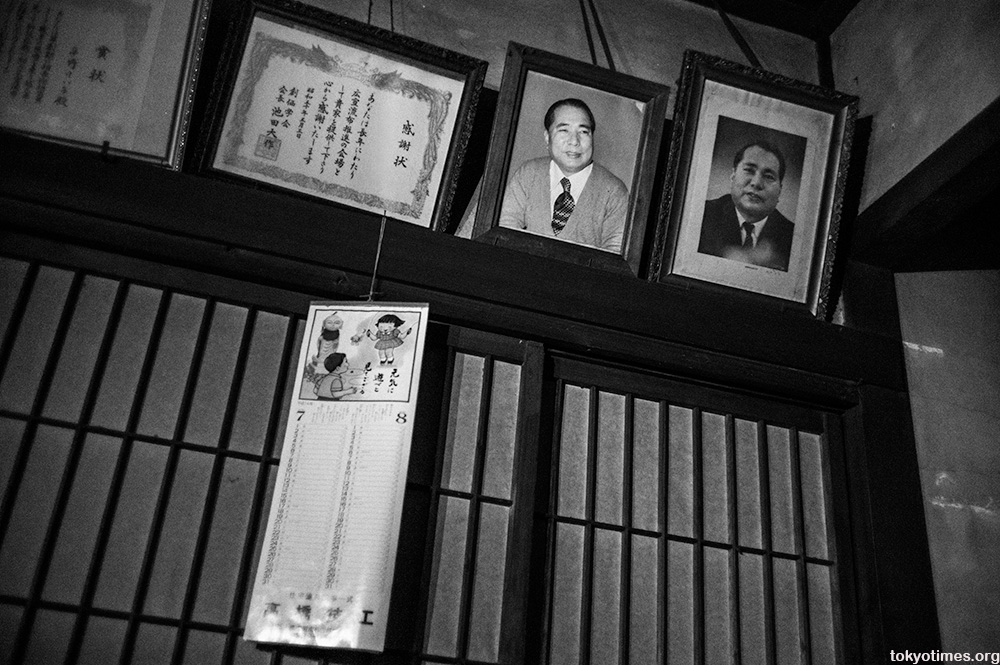
Interestingly, in the same photograph, the calendar on display is from 2002. A surprisingly recent date considering the distinctly rundown nature of the building. Other, slightly contradictory reports, have suggested that the old lady and her daughter lived there until about 20 years ago, but even then it’s still hard to imagine someone being resident in the mid 1990s.
What is for sure, however, is that nobody lives in the clinic now, and the building is slowly going the way of its former owners, and indeed all other things.
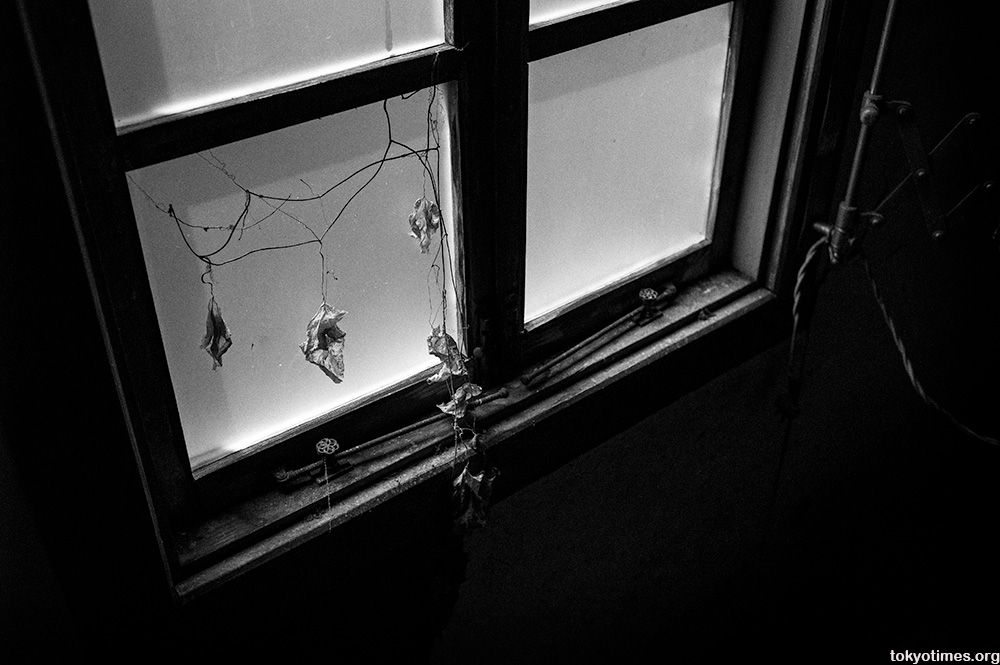
Martin says
Very cool. These places never cease to amaze me.
Lee says
Likewise. This one was pretty special. Once through the door it was like stepping back in time. A wonderful place.
LAObserver says
As always great photos Lee. It is most interesting to see the old corked bottles with liquid inside. On this side of the pond there are collectors who would value having those.
Lee says
Thank you.
I bet. Especially in such good condition. Don’t have a clue what they were used to treat, but they certainly haven’t been used for a very long time…
Coli says
I’ve always wanted to know something when you go into these places. Do you wear a mask and gloves? Seems the dust and other things in the air would be horrific.
Lee says
Gloves, no. Well, unless its cold. But if it’s dusty I’ll wear a mask. In this place though I didn’t need one, Perhaps ‘cos nothing had been moved for such a long time, and it not being open to the elements, everything was still with the air very clear. It didn’t even smell.
Richard says
If anyone’s interested, two books in the second picture are in German.
The one on the left says “Tuberkulose der Kinder” which means “Tuberculosis in children”.
The one on the right reads “Neues praktisches grammatikalisches Lesebuch”. This translates into “New hands-on grammatical reading book”.
Lee says
Cheers. The Tuberculosis book was easy to work out, but didn’t have a clue about the other one.
It’s interesting that the medical precession in Japan does (or at least did) use a lot of German. My dentist has told me the same thing. He needed to learn a fair bit when he was at University. Not sure why, or if it’s still the same today, but it’d be interesting to know the reason.
Norbert Woehnl says
Great photos and fine storytelling again in this posting, Lee; well done.
Without being an expert on this part of history, I once read that during the Meiji period (during the late 1860s/early 1870s), Japan adopted the German system of medicine. Japanese medical students were sent to German universities to learn their “craft”, and vice-versa German physicians were invited to Japan to help transform the country’s medical institutions and education. As you observed (and as I also noticed at occasional doctor/clinic visits in Japan), quite a number of German-derived medical terms have survived, such as アレルギー, カルテ, ノイãƒãƒ¼ã‚¼, ワクãƒãƒ³, ゾンデ – to name but a few.
Lee says
Thanks ever so much, Norbert.
Interesting. Cheers for the details. Clears up a few points. As do the loan words. Hadn’t even thought of those.
Bernadette Marchetti says
I absolutely love the picture of the Red Cross bag! It just seems so sad that it was once used to help so many, and now it just watches everything slowly return to nature.
It reminds me of this weird cartoon I saw when I was a kid in the 80’s called The Brave Little Toaster. It was a bit of a downer for a kid’s cartoon, but I loved it. It made me appreciate all my things because I didn’t want them to get lonely.
Lee says
That’s a great name for a cartoon!
Yeah, the bag is a bit special. A real sense that it was placed on the table by the doctor on his last day, and hasn’t been touched since…
Lizzy says
Fascinating, indeed! The medical apparatus certainly don’t seem to match the calendar date at all!
Lee says
It does, doesn’t it?
Presumably the clinic closed long before then (or at least I certainly hope it did), but it’s still hard to imagine somebody living there at the turn of the millennium…
willy says
Fantastic.. and some choice old pieces of furniture in there too…
Lee says
There are. Those chairs were a real surprise. Wonderfully out of place in such a traditional room.
Squidpuppy says
Good stuff – as always. Lighten up on the quality photography, can you? I feel like a broken record, praising your work. LOL JK
These places seem more than appropriate for an obake or yuurei, or two. Ever get creeped out doing this? Any ghost stories? I’ve been in plenty of Western haikyou myself though, and more often than not, it isn’t really creepy so much as timeless, silent, asleep; almost peaceful. Sometimes sad, but not in a morose way, more like poignant.
We have too many mindless, stupid vandals in the West for haikyou here to remain unsullied, but I’ve always felt a kind of reverence for ruins; these places were once infused with human life. It doesn’t take much imagination to feel something of that.
Lee says
Haha! Thank you very much. Praise away — I’ve no problem hearing such kind words again and again!
“more often than not, it isn’t really creepy so much as timeless, silent, asleep; almost peaceful. Sometimes sad, but not in a morose way, more like poignant.”
That sums up my feelings completely. Way better than I could have explained it too. Admittedly the odd or two have had a slightly odd vibe about them which I can’t explain, but I don’t believe in spirits, ghosts and the like so that’s never been a concern.
And yeah, it’s a real shame when places get smashed up. Such a waste. And for what purpose…?
Lorie says
I loved this!
Lee says
Thanks! It was a really interesting place to visit.
Zeno Vassiliades says
That surgical photo is creepy as hell.
Lee says
I know. God only knows what patents thought of it… Definitely not the kind of thing I’d want to see.
Susan Rogers says
These footsore wonderful Lee. I haven’t visited your site in awhile, I still love your work.
Susan
Susan Rogers says
auto correct turned ‘photos’ into ‘footsore’…too funny!
Lee says
Thanks a lot, Susan. Good to hear from you. It was a pretty special place. A real rarity.
And footsores must be the only time a ludicrous auto correct has actually made sense!
Mike says
I always wonder why in some places, some cultures, abandoned buildings like these are more common than others.
awoisoak says
I love these abandonated places, thanks for sharing it!